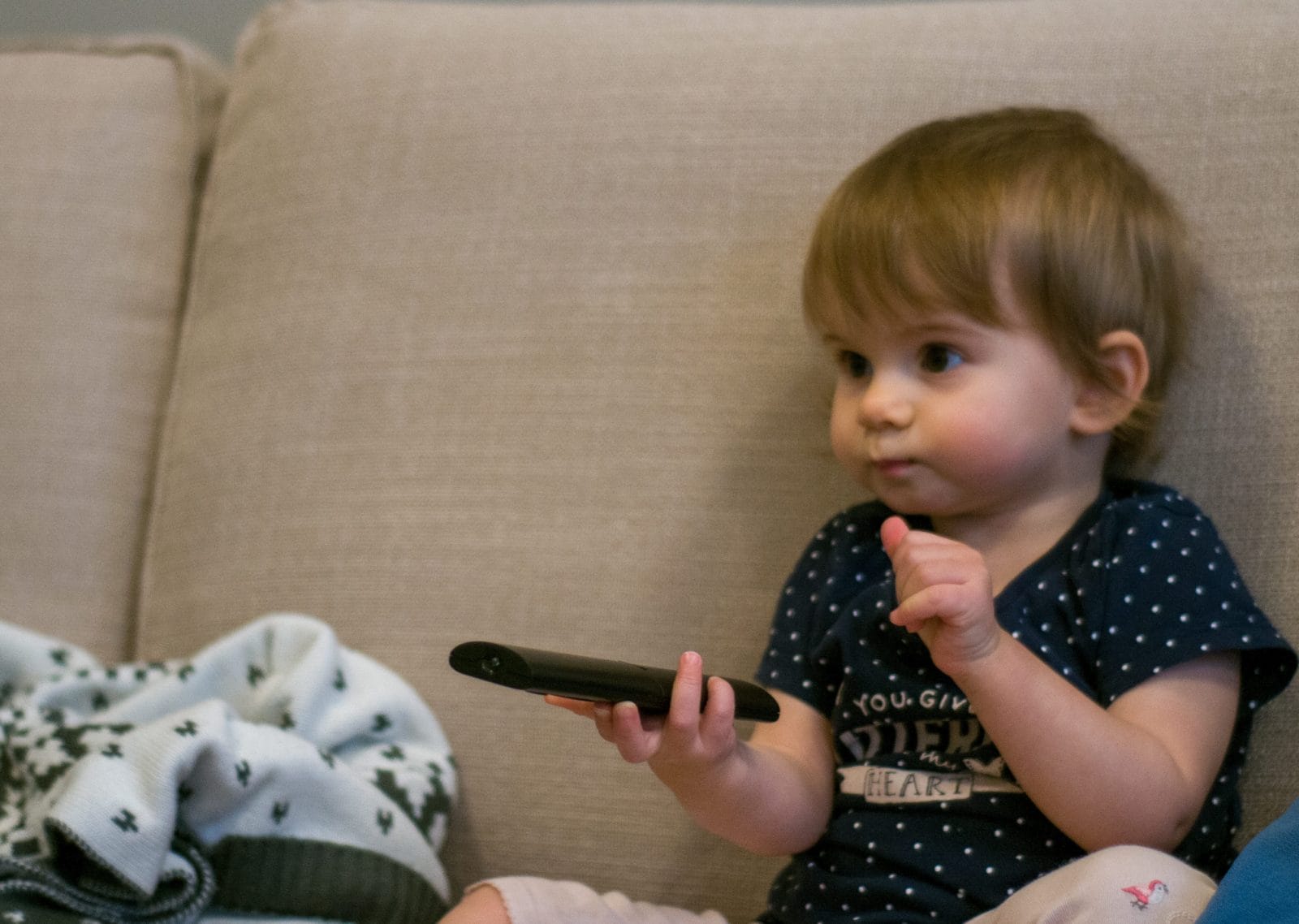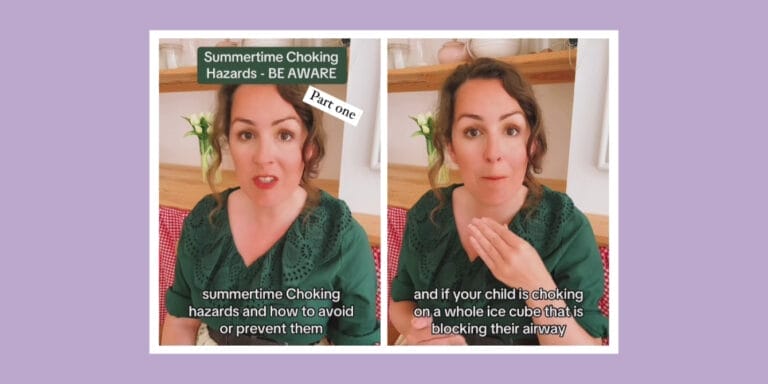8 things babies find irresistible—and what to let them play with instead

@divebatman / Twenty20
According to a pediatric ER physician.
Table of Contents
It takes a lot of creativity to entertain babies and toddlers. They move from one plaything to another in minutes—which usually requires us to keep coming up with new ideas.
As parents, we can get exhausted and let them play with whatever they get their hands on. No judgments—I’ve been guilty of that, too! My boys were born long before I became a pediatrician, and back then I let them play with most items within reach.
But September is Baby Safety Month, an ideal time to think about what common household items are truly safe for your little ones to play with—and what’s not.
8 of the most dangerous household items for babies
While there are certainly more unsafe household items than one short list could cover, here’s a list of 8 items your little one definitely shouldn’t be playing with, the dangers they can cause and safer alternatives.
1. Thermometer
Why children are attracted: Some kids love to hold items that have been used on them. Some thermometers also have blinking and beeping effects that are irresistible for your curious one.
What’s the danger: Anything that contains button batteries tops my list of things NOT to give your child. Button batteries are extremely dangerous if swallowed as they can burn the feeding and breathing tube in a short period of time. Most thermometers contain button batteries and when these batteries fall out, your child may put them in their mouth.
What to do: Take it away completely. It’s not a play option. You can consider colorful pretend doctor kits, most of which contain thermometers.
2. The remote control
Why children are attracted: Kids are naturally attracted to what their parents or older siblings have or use most. And anything that makes stuff happen as if by magic is a big draw for curious little minds. My daughter’s interest in the remote control increased when she noticed it could turn our television on and off.
What’s the danger: Most remotes function with small lithium button batteries and are unsafe for the same reasons as a thermometer. Also, some remote controls have small parts and buttons that may fall apart—especially when chewed on—and could possibly be swallowed. Kids are smart, so with a few bangs on the floor, they can pretty much tear a remote control apart.
What to do: Get them a child-friendly remote control, preferably one that doesn’t use button batteries.
3. Your keys
Why children are attracted: Keys are shiny and make exciting noises when they’re jangled. Plus, parents get really worked up when they go missing—for a baby, what’s not to love?
What’s the danger: Keys are made of brass and contain a small amount of lead. Although the amount of lead may not be high enough to cause injury immediately, lead poisoning affects kids developmentally. There are currently no federal standards regarding how much lead is safe in keys.
What to do: Get babies and toddlers their own toy keys to gnaw on.
4. Pill bottles + containers
Why children are attracted: Kids are attracted to shiny items and small containers. Some are also curious about the sounds made by shaking pills in the container.
What’s the danger: The risk of accidentally swallowing a pill or multiple pills is high. Although most pill containers are made to be child-safe, I’ve seen a few kids find a way to open them.
What to do: Invest in child-friendly, safe, colorful containers. Some have objects inside that make cool noises when babies shake them—look for rattles that contain noise makers that are too big to fall out when opened.
5. Straws
Why children are attracted: Older infants and toddlers love the idea of being able to sip with a straw. This is good for their development, especially when you are weaning them off a bottle. Straw cups can also help build lip, cheek and tongue strength.
What’s the danger: The harm comes when a child engages in active playing such as jumping or running while they have a straw in their mouths. A straw (especially hard plastic or metal ones) can cause a cut inside the mouth if it pokes far back into the child’s mouth or throat. Some injuries can be severe enough to damage an important blood supply.
What to do: Observe children while they use a straw and make sure they are not actively playing with a straw in the mouth. Teach children to put straw cups down before play.
6. Diaper rash cream or other creams
Why children are attracted: Babies may not be immediately attracted to a tube of diaper cream, but I’ve seen parents reach for any quick and easy consoling tool within range while struggling with an unruly diaper change. If a baby reaches for what’s in your hand while being changed, you may just give the diaper cream tube to them to hold without a thought.
What’s the danger: At this age, almost everything goes to the mouth first—then everywhere else. Your child can suck and chew on the tube till it’s open and by the time you realize it, they may have swallowed a good amount of the content, which can be dangerous. The tube cap can also be choking risk if accidentally unscrewed.
What to do: Have safe toys at the ready for your baby to distract themselves with during a diaper change.
7. Coins
Why children are attracted: Coins are shiny and beautifully textured so young children are naturally interested in them. Older toddlers might also like holding coins and imagining they’re “rich.”
What’s the danger: Coins are a choking hazard, which can quickly lead to obstruction and interfering with their airway.
What to do: Be sure to always store coins and other small items safely away. Consider buying a smart kid piggy bank that can help teach your child how to sort coins without danger. Look for toy banks with large coins that can’t fit into the mouth.
8. Small brick sets
Why children are attracted: Small brick sets, popularly known as Legos, are a favorite in most homes. For younger children, the colors are fancy enough and the size is small enough that the bricks often head straight for the mouth. So while small building bricks are fascinating toys and an ideal engagement for older kids, if you have younger children in the mix like I do, you have to be careful.
What’s the danger: Small items can cause choking in kids if swallowed, especially infants and toddlers. Also, some of the building bricks are small enough to fit in other holes—like the ears and nose.
What to do: Separate toys by age. Get a dedicated container to pack building bricks and other small toys into, and be sure it’s a container that snaps shut or locks. Raising Dragons has some great ideas for DIY brick sorters, too. Always encourage older siblings to pack up once they are done playing with theirs.
Here’s to hoping that you and your little ones stay safe.
This post was originally published on June 19, 2020. It has been updated.





































